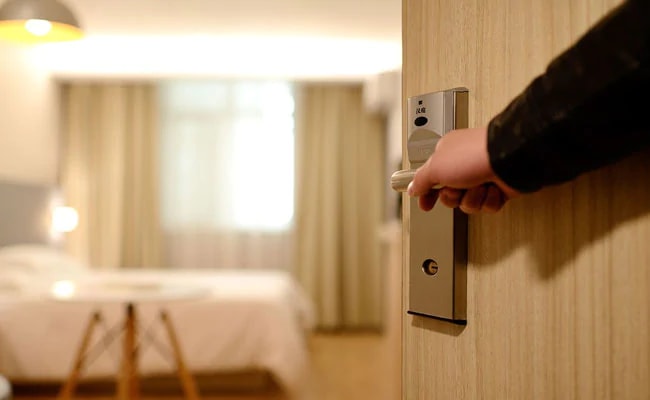An Eater’s Guide to Spain’s Girona Region


Celler de Can Roca gets all the gold, but in Girona, just outside Barcelona, the full breadth of Catalan cuisine deserves attention
If you’ve been to Catalonia, you’ve probably spent time among the crowds in Barcelona. The global destination is dealing with historic overtourism, leaving many locals and visitors dreaming of escapes outside the city. Some venture south along the coast to the golden sands of the Costa Dorada or go elsewhere in Spain. But the real action is up the coast in Girona, home to the aquamarine coves of the Costa Brava and some of the region’s most celebrated chefs.
Culinary talent flocks to the area because it’s where most of Catalonia’s produce grows. In the far northeastern region of Empordà, you’ll find a mix of apple orchards, olive groves, rice paddies, and vineyards. Further inland, in La Garrotxa, dairy farms and fertile volcanic lands yield local specialties like white Santa Pau beans, potatoes, buckwheat, and red turnips. Down on the coast, at the fish markets of Palamós, L’Escala, and Roses, the day’s catch from the Mediterranean goes under the hammer.
The city of Girona, which shares its name with the low-key province, is best known for the Roca brothers — head chef Joan, pastry chef Jordi, and sommelier Josep — behind the three-Michelin-starred El Celler de Can Roca, which was named the World’s Best Restaurant in 2013 and 2015. Since then, the Rocas, who are considered local heroes, have gone on to build quite the culinary empire in their hometown. In addition to Celler, they have a natural wine bar, a Catalan comfort restaurant, a chocolate factory, a boutique hotel, a candy and ice cream store, and as of last year, a new project set in a converted fortress on the outskirts of the city. Meanwhile, an hour away in the medieval town of Olot, a new star is rising; Fina Puigdevall and her three daughters champion the volcanic cuisine of the Garrotxa region at Les Cols, and Martina, the middle daughter, was named Young Chef of the Year by the Spanish Michelin Guide in 2024.
But it’s not all fine dining. Far from it. Driving around the region — and you will need a car, given the lack of public transportation — you’ll find tapas joints, beach shacks serving great paella, and more local village restaurants than you can shake a calçot at.
/cdn.vox-cdn.com/uploads/chorus_asset/file/26000075/TOC_AL_MAR_Fotos_Roger_Lleixa__VIANDA__8_.jpg) Roger Lleixà
Roger Lleixà
What’s the food like in Girona?
Girona and the surrounding area is the best place to sample Catalan food in its truest, most rustic form. Visit anytime between March and November; in the fall hearty stews and soups are a highlight, and the spring brings a bounty of produce. It can get hot in the summer, but so much the better for the beachy restaurants and crisp local wine.
Paella, or simply arroz (rice) as it’s more commonly known, is a highlight across the region, often made with local rice from the town of Pals. Many of the best versions are served with squid, shrimp, and mussels, or in a Catalan surf-and-turf style called mar i muntanya, which could include monkfish with wild mushrooms, or chicken with crayfish.
The other most important Catalan dish to know is pa amb tomàquet, the national dish of Catalonia: bread with tomato, often topped with anchovies from L’Escala or different types of sausage like butifarra, fuet, or llonganissa.
The rest of the Catalan canon is just as thrilling: escalivada (grilled bell peppers, eggplant, and onion served cold and drizzled in extra-virgin olive oil), escudella i carn d’olla (a meat and vegetable soup popular in winter), fricandó (slow-cooked beef and mushroom stew), suquet de peix (fish and seafood stew), and xató or xatonada (a salad made with curled endives, black olives, anchovies, and salted cod), among others. Sweets include flan (baked vanilla custard), mel i mató (fresh goat cheese topped with honey and toasted walnuts), crema Catalana (custard with a caramelized top), and xuixo (a kind of donut filled with sweet cream) that’s a specialty of Girona city in particular.
/cdn.vox-cdn.com/uploads/chorus_asset/file/26000049/shutterstock_2390278885.jpg) trabantos/Shutterstock
trabantos/Shutterstock
/cdn.vox-cdn.com/uploads/chorus_asset/file/26000007/Casa_Cacao_12.jpg) Casa Cacao
Casa Cacao
/cdn.vox-cdn.com/uploads/chorus_asset/file/26000050/GettyImages_460863903.jpg) John Greim/Getty Images
John Greim/Getty Images
/cdn.vox-cdn.com/uploads/chorus_asset/file/26000074/_DSC9741_copia.jpg) La Gastrónomica
La Gastrónomica
Where to eat in Girona
El Celler de Can Roca and Esperit Roca
El Celler de Can Roca is Catalonia’s most storied fine dining temple, the kind of place people visit once but talk about forever. Set in an unassuming suburb down the road from the family restaurant opened by the Roca brothers’ parents, Celler has retained three Michelin stars since 2009, been named the best restaurant in the world twice, and firmly placed Girona on the map for food pilgrims from across the globe. Last year, Celler welcomed a new sibling, Esperit Roca, another fine dining restaurant that was awarded its first Michelin star within six months of opening (more on that below).
Vii, Normal, and Rocambolesc
The Rocas’ other restaurants are stunners in their own right. Set under the ancient arches of Girona’s medieval old town, the latest opening is Vii, a wine bar that looks like an informal tapas bar and is priced accordingly — except there’s a list of more than 1,000 wines, with a focus on minimum-intervention Catalan and French varieties. Less than a 10-minute walk away, Normal Restaurant is anything but ordinary; there the menu is dedicated to Catalan grandma dishes like hearty stews and a particularly decadent beef Wellington. From Normal, it’s a short stroll across Girona’s blood-red Eiffel Bridge to grab dessert to-go from Jordi Roca’s dazzling candy emporium Rocambolesc. Hit all three stops, and in 15 minutes, you’ve got a Roca-approved lunch of champions.
La Gastronòmica
No self-respecting Catalan would be caught dead shopping for fresh produce in the supermarket. The local market is the place to buy fruit, vegetables, meat, and most importantly, fish and seafood. The most celebrated fish market of all is the one in Palamós, home of the famous red shrimp. Visit from Monday to Friday at 4 p.m. when the haul of the day is put up for sale. Or better still, have it prepared for you while sailing along the coast on a vintage wooden boat with La Gastronòmica, a Palamós-based outfit specializing in food and wine experiences. In Girona city, you can also visit the market and sample the local gastronomy with Girona Food Tours.
Les Cols
In 1990, a young chef named Fina Puigdevall opened a restaurant in the 13th- century farmhouse in which she was born. Les Cols received its first Michelin star in 2005, followed by a second in 2010. In 2020, Fina and her daughters (chef Martina, pastry chef Carlota, and maitre d’ and sommelier Clara) won the restaurant a Green Michelin star with their commitment to all things local, seasonal, and organic. Creating a 20-plus-course tasting menu using only the produce endemic to La Garrotxa (a region with no access to the sea) is no mean feat. Instead of relying on traditional fine dining ingredients like caviar and lobster, the Puigdevalls spotlight local delicacies like Santa Pau beans served with pig trotters, or freshwater seafood like river crayfish, trout, and eel. Every bite is like a tiny taste of the dramatic natural landscape and the two dormant volcanoes that surround the light-filled dining room.
Can Font
A local forquilla breakfast typically consists of various fried and grilled meats and hearty offal stews. This rich spin on brunch is one of the most Catalan experiences there is, a tradition that has lived on from the days when laborers needed to fill up before going out to work in the fields or the factory. If chowing down on fetge i lletada (liver and sweetbreads) or cap i pota (head and trotter stew) at sunrise sounds like your jam, look no further than La Garrotxa classic Can Font, which opens at 7:45 a.m. and is usually packed by 8.
/cdn.vox-cdn.com/uploads/chorus_asset/file/26000073/pinyes_i_pinyons.jpeg) Les Cols
Les Cols
/cdn.vox-cdn.com/uploads/chorus_asset/file/26000053/22230088.jpg) ©joan pujol-creus
©joan pujol-creus
/cdn.vox-cdn.com/uploads/chorus_asset/file/26000054/22230058.jpg) Joan Pujol-Creus
Joan Pujol-Creus
Mas Generós
Empordà-based chef Iolanda Bustos, author of Cocinar con Flores (Cook with Flowers), doesn’t just use seasonal flowers and herbs to make her food look pretty, but to add flavor and texture. Try her colorful creations at Mas Generós, where the menu is all about ingredients from the region — rice from the fields in nearby Pals topped with red shrimp from the Palamós fish market, or flowers from the chef’s own garden lightly battered in tempura style. Mas Generós is set in a restored 17th-century farmhouse that also houses a charming boutique hotel.
Sala de L’Isaac
After training with the Rocas and at Michelin-starred Via Veneto in Barcelona, Isaac Sabrià became the third generation to head up the kitchen at his family restaurant, set in an 18th-century farmhouse. Seafood is the protagonist here, like rock mussels grilled in olive oil, or cuttlefish from Palamós served with meaty cap i pota that pairs beautifully with a fresh, spicy local red wine from the nearby Empordà. For dessert, there’s sheep’s milk ice cream from Ripollés with macerated strawberries from Sant Pol de Mar.
Mooma
Apples are to L’Empordà what oranges are to Florida. Stop by any farm shop in the area surrounding Torroella de Montgrí, east of Girona, and you’ll leave with more variations on chutneys and compotes than you can carry. If you prefer your apple treats in liquid form, head to Mooma, a cider house set among the fruit trees in Palau-Sator. Apart from apple, pear, and elderflower cider, Mooma also has an impressive food menu that showcases local specialties like escalivada with anchovies from L’Escala and Llançà octopus served with truffle Parmentier.
Toc al Mar
A chiringuito is a casual seaside shack that serves cold beers, sandwiches, and deep-fried seafood to beachgoers. As perhaps Catalonia’s most in-demand chiringuito, Toc al Mar is often booked out weeks in advance — and with good reason. Overlooking one of the Costa Brava’s prettiest coves in Aiguablava outside the medieval village of Begur, the menu here would hold its own at any number of far fancier establishments. Everything — fresh fish, seafood, paella — is cooked over a slow-burning wood fire and served perfectly smoky. Wash it all down with the house white grenache from a nearby winery.
/cdn.vox-cdn.com/uploads/chorus_asset/file/26000128/Piscina_Hotel_1.JPG) Esperit Roca
Esperit Roca
/cdn.vox-cdn.com/uploads/chorus_asset/file/25999521/LA_TAVERNA_Beach_Restaurant.jpg) Hostal de la Gavina
Hostal de la Gavina
/cdn.vox-cdn.com/uploads/chorus_asset/file/26000081/04_CCR.jpg) Joan Pujol-Creus
Joan Pujol-Creus
/cdn.vox-cdn.com/uploads/chorus_asset/file/26000119/CAN_MASCORT_FOTOS_DESEMBRE_DSC_9452.jpg) Can Mascort
Can Mascort
The best Girona hotels for food lovers
Esperit Roca
Esperit Roca is set in the Castell de Sant Julià de Ramis, a dramatic 19th-century fortress, which has also been retrofitted to include a spa, an 80,000-bottle wine cellar, a distillery, and a second restaurant. The main dining room at Esperit features the Rocas’ notable dishes in a more affordable format — and without the 11-month wait for a reservation at Celler. Choose between two tasting menus: six mains and two desserts, or two mains and six desserts, with highlights including The World (five bites served on a spinning globe) and Chocolate Anarchy (a celebration of cocoa in all its forms). Then you can retire to one of 16 serene rooms overlooking the rolling hills and superb hiking trails of L’Empordà. Rooms start around 375 euros in the summer.
Casa Cacao
You can also stay with the Rocas in central Girona at Casa Cacao, a boutique gem set in the same building as the family’s chocolate factory. The hotel is famous for its panoramic rooftop and the city’s most indulgent breakfast. Rooms (with breakfast included) start around 280 euros in the summer.
Can Mascort
In the medieval center of Palafrugell, less than a 15-minute drive from the beaches at Tamariu and Calella de Palafrugell, Can Mascort offers an ideal starting point for exploring the Costa Brava at a fraction of the cost of a seaside stay. The 15-room hotel is set in a restored 17th-century house, while its breakfast of local, organic Catalan delicacies is served in a former apothecary. Rooms (with breakfast included) start around 170 euros in the summer.
Hostal de la Gavina
In the upscale coastal resort town of S’Agaró, Romain Fornell of the Michelin-starred Caelis in Barcelona is the culinary director at Hostal de la Gavina, a soon-to-be hundred-year-old grande dame hotel that has played host to more celebrities than a red carpet in Hollywood. Rooms start around 600 euros in the busy summer season.
Isabelle Kliger is a freelance writer specializing in food, travel, and culture, based out of Barcelona since 2010. A fan of all things local and sustainable, Isabelle likes to spend her time exploring Catalonia’s countryside, beaches, and culinary treasures.































































































































































/cdn.vox-cdn.com/uploads/chorus_asset/file/26000088/GettyImages_471906823.jpg)
/cdn.vox-cdn.com/uploads/chorus_asset/file/26000107/GettyImages_687979984.jpg)

















